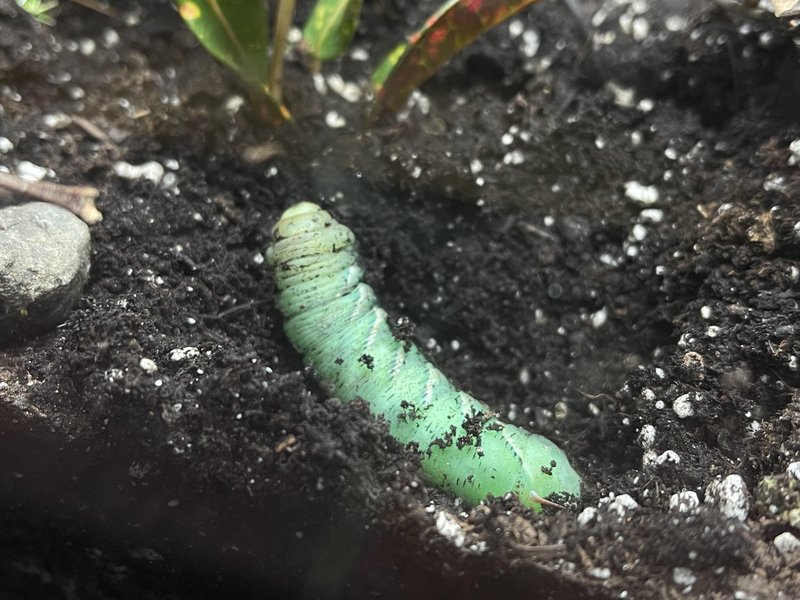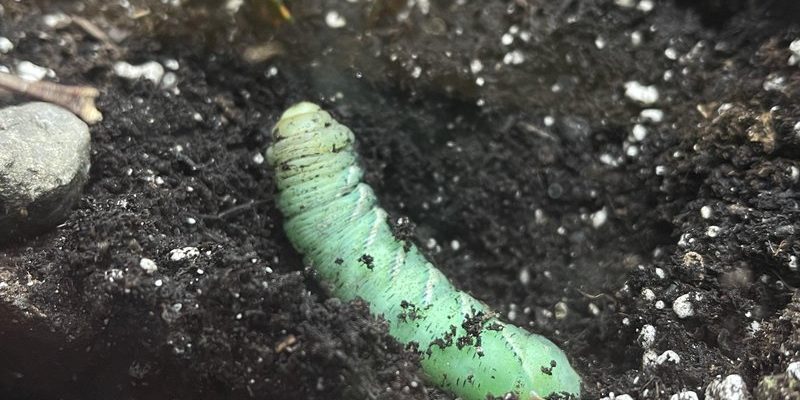
Imagine a group of students, eyes wide, as they observe hornworms munching on leaves, morphing into beautiful moths right before their eyes. It’s like watching a live science experiment unfold! Hornworms, often found as larvae of the **Hawk Moth**, provide insight into entomology, ecology, and even genetics. So, let’s dive deeper into why using hornworms in entomology classes can enhance the learning experience.
Why Choose Hornworms for Entomology Classes?
Hornworms, scientifically known as **Manduca sexta**, are not your average caterpillars. They are large, green, and can grow up to 4 inches long! Their distinct appearance makes them fascinating for students. Here’s the thing: having a tangible subject to study can really elevate a student’s understanding of biology.
1. **Visual Learning**: Hornworms’ large size and vibrant green color grab attention. Students can observe their behavior easily, whether it’s how they eat, how they move, or even how they react to stimuli. Visual learning is incredibly effective.
2. **Lifecycle Observation**: Hornworms undergo complete metamorphosis, transitioning from eggs to larvae, then pupae, and finally to adult moths. This lifecycle allows students to witness firsthand the stages of development, making the concept of metamorphosis more relatable and understandable.
3. **Ecological Impact**: By studying hornworms, students learn about their role in the ecosystem. Hornworms are often seen as pests, but they also play a crucial role in their habitat. Exploring these dynamics can spark discussions about balance in nature and pest management.
Setting Up the Classroom Experience
Creating an engaging environment for studying hornworms doesn’t have to be complicated. Here are some straightforward steps to help you get started.
1. **Acquire Hornworms**: You can purchase hornworms from specialized insect suppliers or local pet stores. It’s crucial to ensure they’re from a reputable source to avoid introducing pests into your classroom environment.
2. **Habitat Setup**: Create a simple habitat for them. A transparent container with air holes works well. Add branches and some leaves from their natural diet, like tomato or tobacco plants. This gives students the chance to observe their natural behaviors without stress.
3. **Daily Observations**: Encourage students to keep a daily journal of their observations. They can document changes, measure growth, and even sketch what they see. This hands-on approach helps solidify their learning.
Connecting Lessons to the Curriculum
Integrating hornworms into various subjects can enhance the learning experience beyond just entomology.
1. **Food Webs and Ecosystems**: Discuss how hornworms fit into the food web. Who eats them? How do they affect plant life? This creates a broader understanding of ecosystems.
2. **Genetics and Heredity**: If your students are learning about genetics, hornworms can serve as a practical example of inheritance and traits. They can observe variations in color and size, creating discussions around genetic diversity.
3. **Art and Science**: Engage creative minds by having students draw or paint hornworms. They can explore different artistic styles while learning about the biology of these insects.
Common Challenges and Solutions
While using hornworms in class can be a fun and educational experience, there can be a few hiccups along the way. Here’s how to tackle some common challenges.
1. **Feeding and Care**: Hornworms eat a lot! Ensure you have plenty of leaves available and teach students how to care for them properly. Create a feeding schedule to keep them healthy and thriving.
2. **Handling Education**: Some students might feel squeamish about handling live insects. Start by allowing them to observe from a distance before gradually introducing handling tasks. This can help build their confidence.
3. **Monitoring Growth**: Hornworms grow quickly, which is part of their charm. However, this means you need to monitor their habitat closely. Regular checks will prevent overcrowding and ensure they have enough food.
Encouraging Responsible Learning
Using hornworms in the classroom also presents an opportunity to teach students about biodiversity and conservation.
1. **Respect for Nature**: Emphasize that hornworms, like all insects, play a role in the environment. Teaching students about the importance of each species can foster a sense of responsibility and respect for all living things.
2. **Experimentation and Ethics**: If students want to conduct experiments, discuss ethical considerations. How do we study insects without harming them? This conversation helps build a strong foundation for future scientific endeavors.
3. **Sustainability Practices**: Explore the concept of sustainable practices in insect collecting. Discuss how to source hornworms responsibly without impacting wild populations.
Incorporating hornworms into entomology classes opens up a vibrant world for students to explore. From their striking appearance to their vital role in ecosystems, hornworms offer rich educational experiences.
By witnessing the lifecycle, observing behaviors, and engaging in hands-on learning, students gain a deeper appreciation for the insect world. So, consider giving hornworms a chance in your classroom. These tiny creatures might just inspire the next generation of entomologists!

